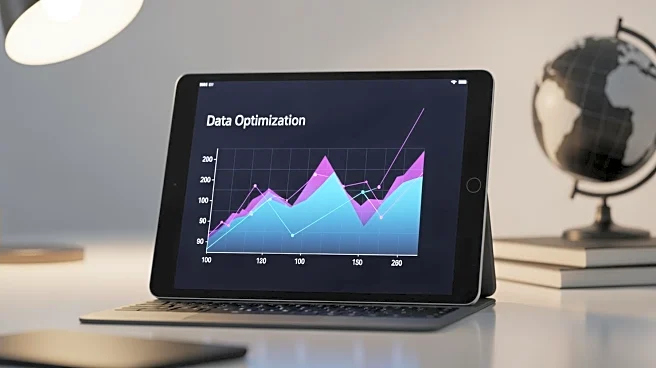What's Happening?
The television industry is undergoing significant changes in how viewership is measured, driven by the rise of connected TV (CTV) and streaming platforms. Traditional measurement models, which relied heavily on age and gender demographics, are being replaced
by hybrid models that incorporate large-scale device-level datasets and AI technologies. Companies like Nielsen, OpenAP, and Samba TV are leading this transformation by using advanced data analytics to provide advertisers with more accurate and actionable insights into audience behavior. These new models aim to capture who is watching what and how best to reach them with commercials, leveraging big data and AI to enhance the granularity and accuracy of viewership measurement.
Why It's Important?
The shift to hybrid and AI-driven measurement models is crucial for advertisers and content producers as it allows for more precise targeting and optimization of ad creatives based on real-time consumer responses. This evolution in audience measurement is significant for the advertising industry, as it moves beyond traditional metrics to focus on advanced audiences and outcomes, such as purchasing history and lifestyle behaviors. By providing a more comprehensive view of audience engagement, these models enable advertisers to deliver better results and achieve desired outcomes, such as increased brand awareness and purchase intent. This transformation is essential for adapting to the fragmented viewing landscape and ensuring effective media strategies.
What's Next?
As TV measurement continues to evolve, it is expected to become increasingly audience-based, moving away from traditional age/gender demographics. Companies are likely to expand their partnerships and develop new tools to further enhance measurement accuracy and effectiveness. Advertisers and content producers will continue to monitor the scale of viewership and audience resonance, making ad creative and media content optimization decisions more fluidly. The industry will focus on delivering outcome-focused impacts, such as increased awareness and purchase intent, across various platforms and industries.
Beyond the Headlines
The integration of AI and hybrid models in TV measurement raises important considerations regarding data privacy and the ethical use of consumer information. As these technologies become more prevalent, ensuring that data is used responsibly and transparently will be crucial. Additionally, the shift towards more personalized and targeted advertising may influence cultural perceptions of privacy and consumer autonomy, prompting discussions about the balance between effective advertising and consumer rights.














